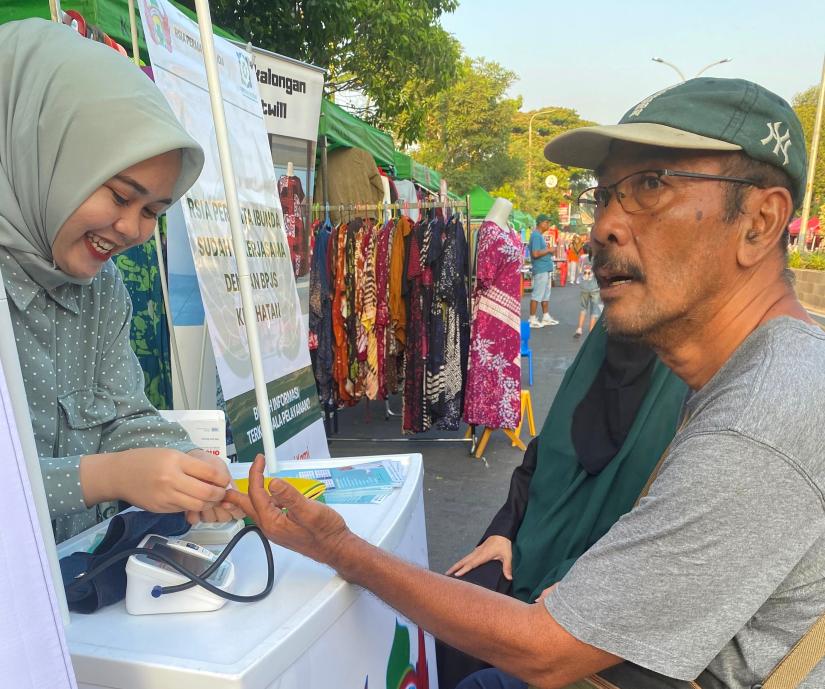Dr Moira Scerri takes an interdisciplinary approach to service science, emerging technologies and participatory design to improve service delivery in health and ageing. A Senior Lecturer in Strategic Supply Chain Management in the UTS Business School, Moira’s main area of research is service value networks and understanding complex systems.
Improving healthcare through customer journey maps

“I and a small group of colleagues from the UTS Business School had the privilege of working on a diabetes-related project with academics from the Faculty of Public Health. As interdisciplinary researchers, we appreciated their skills and expertise and how they prioritised diabetes self-management and diabetes education,” she explained.
During the project, Moira became curious about the trajectory of diabetes, from someone not being aware they had diabetes to learning to live with diabetes and manage the condition, trying to avoid the development of diabetes-related complications.
“In service design we use customer journey mapping, a structured technique used to understand, visualise and improve the experiences of customers as they interact with service providers. So, I began exploring and mapping how other countries managed this process,” Moira said.
I also often use divergent thinking and strategic scanning; for those not in business, this is the systematic process of gathering, analysing, and interpreting information available in the external environment. It is a good way to identify potential opportunities and threats, allowing for proactive rather than reactive decision-making.
“I also often use divergent thinking and strategic scanning; for those not in business, this is the systematic process of gathering, analysing, and interpreting information available in the external environment. It is a good way to identify potential opportunities and threats, allowing for proactive rather than reactive decision-making.”
Pursuing international collaborations
During this process, Moira came across the Invested: Australia’s Southeast Asia Economic Strategy to 2040 report. The report identifies priority countries in Southeast Asia that Australia should develop international relations with, along with key industries, health being one of them.
After chatting with a few colleagues from other universities, Moira decided to focus on Indonesia.
“After all, Indonesia is our closest neighbour,” she remarked. “It has a high population, the prevalence of diabetes is higher than other countries, and many people are only diagnosed when they present with complications.”
With a small amount of money in her research investment account, Moira thought, “this would be a good place to invest it as it ticked all the boxes”.
Together with a small group of Australian academics with contacts and experience conducting research in Indonesia, the team was able to engage a recent PhD graduate from ANU who was completing her PhD in obesity and diabetes in Indonesia. They also contacted the Chronic Disease Research Centre from the University of Muhammadiyah Surakarta in Central Java.
The group then collaborated and submitted a research proposal to create a diabetes customer journey map for Indonesia.
“The customer journey map allows healthcare teams, policy decision makers and early career researchers understand the different stages that people go through in their diabetes journey, where they interact with the different parts of the health system such as primary healthcare providers, allied healthcare providers, technology providers and in the Australian context, the NDSS product, programs and services,” Moira explained.
While the team was unsuccessful in achieving its first grant, the international research collaboration has led to many positive outcomes including an academic appointment and the customer journey map serving as an artifact to communicate the need and potential areas of focus for other researchers including PhD students.
Moira said the team has continued to bootstrap the project.
In this respect, our project demonstrated the power of slicing and dicing a large research agenda so that so people can see where they and their work fits in and how their contribution adds to the bigger picture.
“We now have PhD students looking at the use of conversational agents for diabetes self-management and another exploring the post adoption strategies for the use of wearable devices for managing chronic health conditions. One of the team members has also been successful in securing a small early career research grant, where were we will look to map different data sources and data points with the aim of eventually developing a predictive model. The idea being to move the dial on diabetes to prevention and early detection,” she said.
“In this respect, our project demonstrated the power of slicing and dicing a large research agenda so that so people can see where they and their work fits in and how their contribution adds to the bigger picture.”
Moira recommends that others pursue international collaborations to leverage their expertise.
“Working internationally can lead to very positive outcomes, even if initial attempts to get things off the ground are unsuccessful. Our collaboration has led to many outcomes, including academic appointments and new research opportunities.”